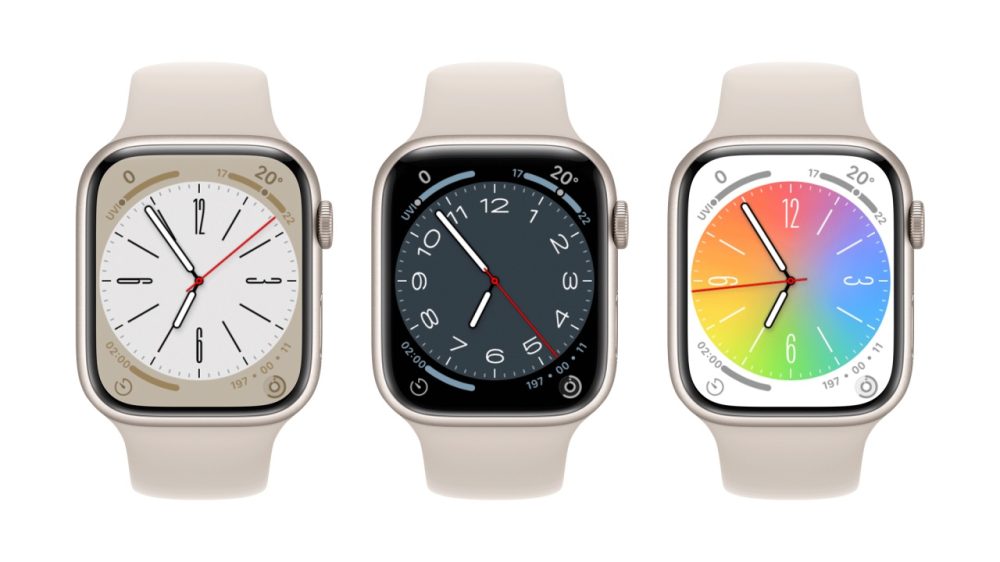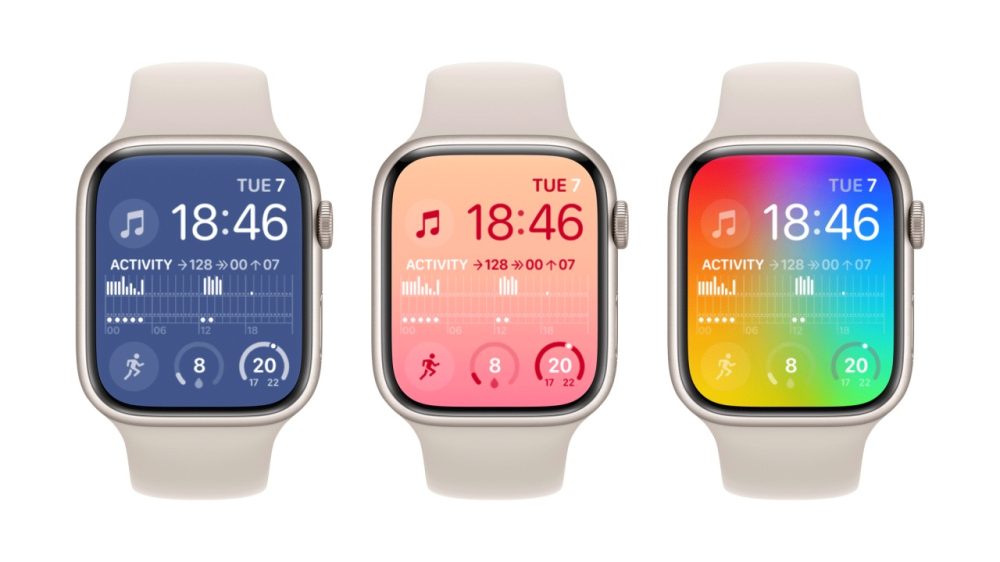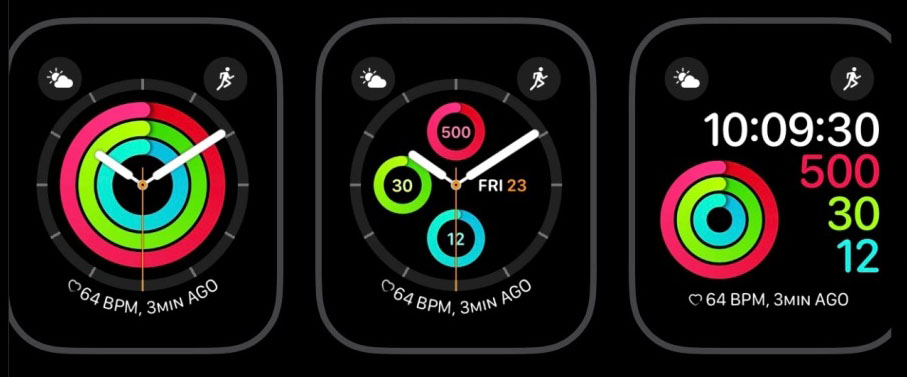
Yep, it’s that time of the year when all the “new year, new you” advice abounds – and when people enthusiastically make all kinds of vows to themselves, most of which are forgotten by the end of January.
But as any fitness expert or dietician will tell you, the secret to sustainable change is to set realistic health and fitness goals, which rely on relatively modest changes you can incorporate into your everyday life. The Apple Watch can help you in three ways …
First, it can passively measure a range of health- and fitness-related metrics, from the number of steps you take to your resting heart rate (a key measure of fitness). This data is available on demand in the Health app on your iPhone, and we’ll talk shortly about an easy way to make the most relevant data available on a single screen.
Second, the Watch can display your active calorie burning and exercise minutes at-a-glance, thanks to the Activity rings. Setting this as a complication on your Watch face (explained below) means that simply glancing at your Watch tells you everything you need to know about how you’re doing that day.
Third, it can provide real-time data during workouts, to guide and help motivate you while exercising.
Set sustainable goals
There’s a natural human tendency to want to see results quickly, and that can lead people to set goals that might be achievable in the short term but are unlikely to be sustainable in the medium to longer term.
A classic example is crash diets. People half-starve themselves for a week or two, lose a lot of water and some fat, but are so hungry they then end up binging – and put all the weight back on.
If you’re aiming to lose weight, most dieticians will tell you that a sustainable rate of weight loss is in the order of one to two pounds a week. That might not sound like a lot, especially if you’re trying to lose a lot of weight, but it adds up. In six months, you could lose 50 pounds. Losing weight at this rate is easily done using simple changes to your eating habits that won’t leave you feeling hungry, and which you won’t be desperate to end as soon as possible.
Similarly with exercise. If your normal exercise routine is a gentle stroll to the coffee shop a couple of blocks away, then it might feel good to promise to wake an hour earlier each morning and go for a three-mile jog, but the chances of keeping this up for more than a few days are rather low. Far better to start by turning that two-block stroll into a brisker-paced 10-block walk, and to build up from there.
Of course, everyone is different. For some people, an ambitious goal – like a 10K fun-run, half-marathon, or marathon – might be the thing that motivates you to get out there. But even things like “couch to 10K” programs start slowly. A typical example starts with three days a week, and in the first week all you to is run for one minute, walk for two minutes, and repeat a few times.
One thing that’s proven key for me is choosing exercise I enjoy. I’m never going to head to the stair-climbing machine in my local gym, but I actively enjoy both walking and cycling, so these are easy ways to hit exercise goals.
But there’s another important thing where goals are concerned …
Set goals you can directly control
Another key piece of advice from health experts is to set goals you can directly control. Personally, I think in terms of inputs and outputs. Inputs are things like how many calories I eat each day, while the output is how much weight I lose.
Similarly with exercise: An input would be how many minutes of exercise you take each day, while an output would be your resting heart rate. The more exercise you get, the fitter you will become, and your resting heart rate will fall as a result. But it makes sense to focus first on the exercise minutes, as that’s entirely within your control.
It’s important to measure both inputs and outputs, because the latter track your progress toward your goals, but you can’t directly control outputs. So it makes sense to focus on the things you can control. Provided you follow the consensus view of experts on setting those inputs, the outputs will follow.
For example, if you want to lose weight at the recommended rate of one to two pounds a week, you need to create a calorie deficit of around 500 calories per day. In other words, you should be burning 500 calories more than you consume each day.
The calorie goal needed to achieve this depends on things like how active you are, and your metabolism, so get advice from your doctor – but for a sedentary person this typically means 1,200-1,500 calories for a woman, and 1,500-1,800 calories for a man.
Your Watch can’t track the calories you eat, but it can track the calories you burn.
How your Apple Watch can help
The first and most obvious step is to add your Activity rings as a complication. Depending on how focused you want to be, there are three options:
- Activity rings as a small complication on any face
- Activity graph as a central complication on a modular face
- Choose an Activity face
Here’s examples of each. First, small rings on the Metropolitan face:

Second, a graph on a Modular face:

Finally, an Activity face:

While you can set faces and complications directly on the Watch, personally I think it’s quicker and easier to do it in the Watch app on your iPhone. To choose a face:
- Open the Watch app on your iPhone
- Tap Face Gallery at the bottom of the screen
- Scroll until you find a face you like
- Tap the face
- Tap Add
To customise complications:
- Tap My Watch at the bottom of the screen
- Tap the face you just added, at the top of the screen
- Scroll down to Complications and choose a position
- Tap that position and choose Activity
The Workouts app
The Watch will automatically track your exercise, but if you activate the Workout app, you’ll be able to track your stats in real time.
You can press the large side button to bring up your apps (selecting All Apps as required), or ask Siri to “Open Workouts,” but the easiest way to do it is to select Workouts as one of your complications – then it’s always just a tap away.
There are built-in workouts for many forms of exercise, and you can also create a custom workout if you can’t find a suitable existing one.
Third-party apps
There are also many third-party exercise apps designed to either guide you through an exercise routine, or provide more detailed data.
Gentler Streak is one of the more popular choices, recently selected by Apple as its Apple Watch app of the year.
Configure the Health app dashboard
The Apple Watch automatically feeds data to the Health app on your iPhone. The sheer volume of data captured is impressive, but can also make it hard to focus on the most useful data for your goals. For this reason, it’s worth spending a few minutes configuring the Summary page to display your key data.
To do this:
- Open the Health app on your iPhone
- Tap the Summary button at the bottom of the screen
- Tap the Edit button at the top of the screen, next to Favorites
- Tap the stars to select the data you want to see first
A solid star means that item will appear in your favorites, a hollow start that it won’t.
I recommend being selective here: If you choose too many items, it will become too much of a chore to scroll through them.
Connect any third-party devices to the Health app
If you own any compatible third-party health and fitness devices, like smart scales, then you can use the companion app to have it share the data with the Health app. That way, you won’t have to look in more than one place.
For example, I have Withings Body Cardio Scales, and these measure:
- Weight
- Body fat percentage
- Bone mass
- Muscle mass
- BMI
- Heart rate
- Pulse wave velocity
- Vascular age
All that data is automatically sent to Apple’s Health app every time I weigh myself.
Of course, the tech can’t do the hard work for you – but it can make it much easier to track your progress, and to help motivate you.
Do you subscribe to the “new year, new you” concept? Please share your own goals and experiences in the comments.
Photo: Christine Sandu/Unsplash
FTC: We use income earning auto affiliate links. More.





Comments